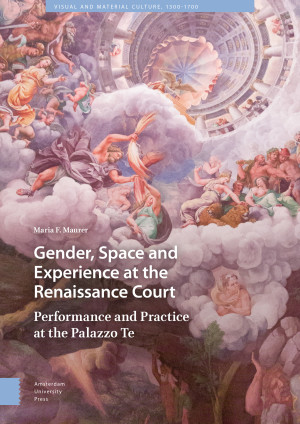"The Palazzo del Te, the extraordinary villa ex-urbana built in Mantua by Duke Federico II Gonzaga in the 1520s and 1530s, is a confounding architectural and artistic tour de force. [...] In this book, Maria Maurer offers new possibilities by combining spatial theory with reception theory to discover the ways the villa became a locus for, and an influence on, the performance of gender by its inhabitants and visitors. [...] In fact, the book itself is a kind of performance, demonstrating the fecundity of Maurer’s approach, which is woven around a solid chronological core, tracing a trajectory from the novelty of Giulio’s invention at the Palazzo del Te to its dismissal as a bizarre and generally ignored aberration by the eighteenth century."
- Sally Hickson, University of Guelph, Early Modern Women Vol. 16 No. 2 (Spring 2022)

